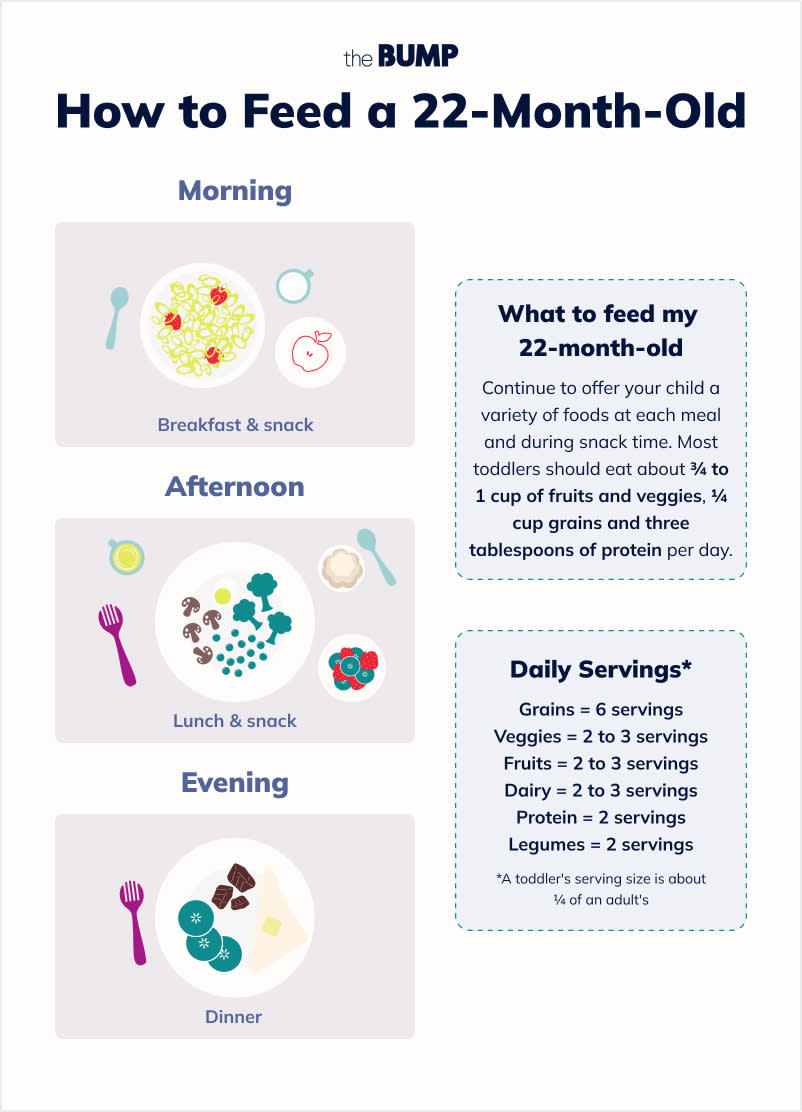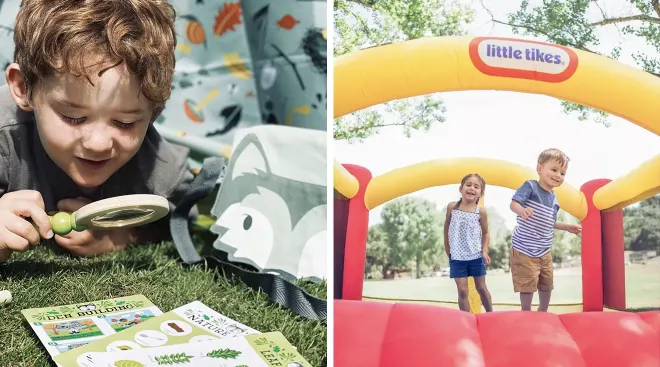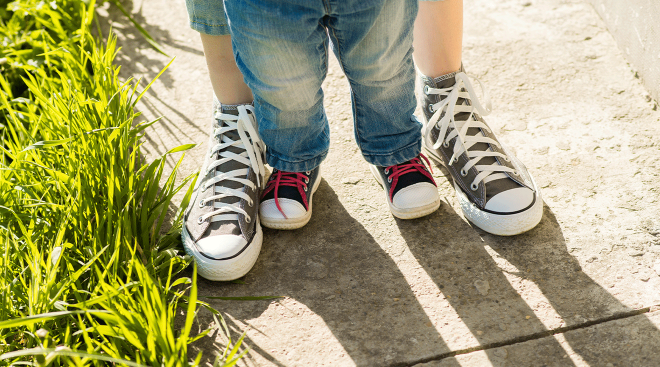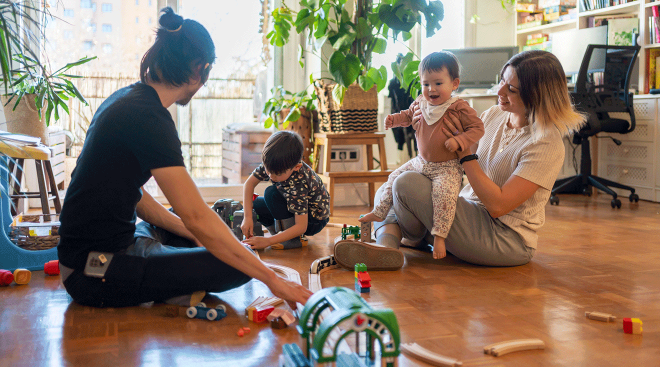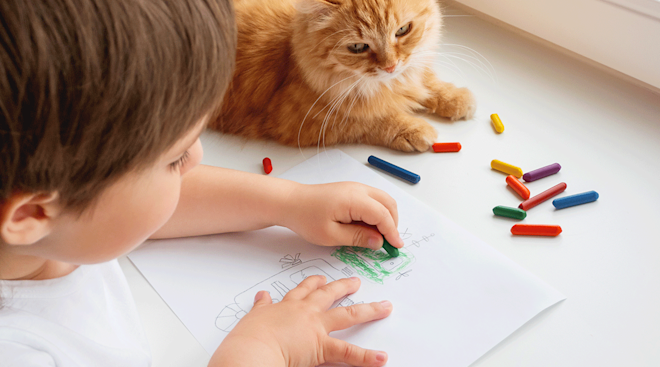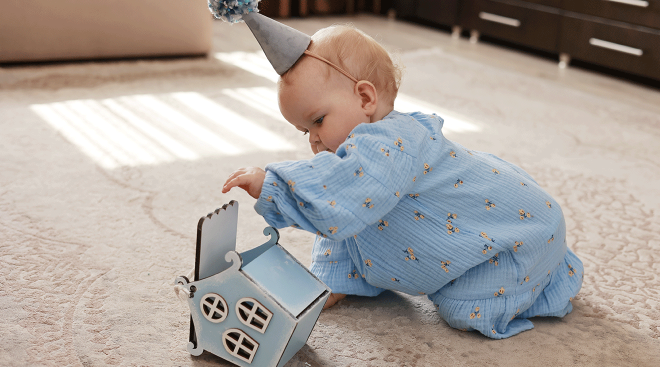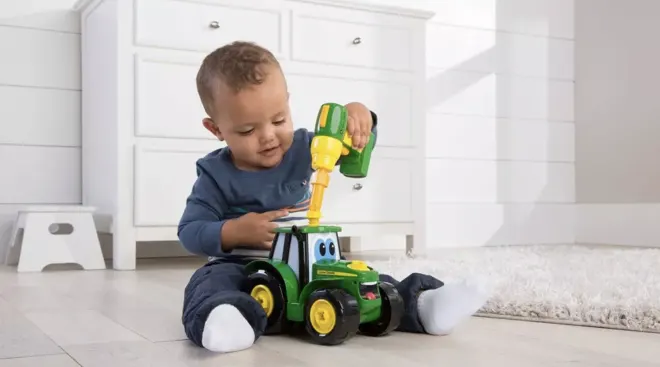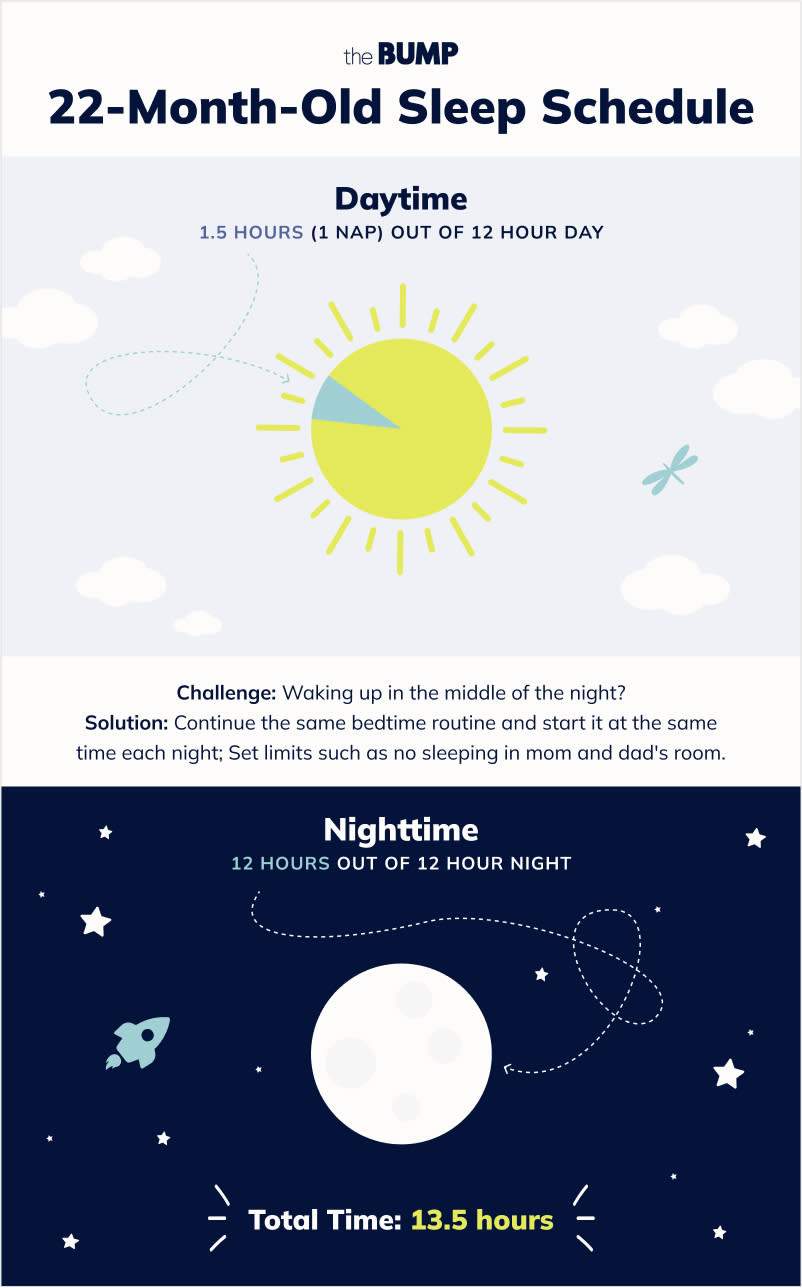Can you believe it? It seems like just yesterday you were taking your newborn baby home from the hospital, and now they’re nearly 2 years old! During this stage, you’re going to see your child’s personality really shine through—but even if you have a mellow kiddo, don’t be surprised when they melt down in tears. It’s totally normal for 21-month-olds to feel frustrated as they learn how to effectively communicate. Kids this age are also rarely great at taking turns and sharing, and they can seem downright rude. Keep your cool and model good behavior, so your child sees what they’re supposed to be doing. Eventually they’ll catch on.
In our 22-month-old baby guide below, you’ll find tips on dealing with everything from sleep regression to food strikes. We also list out some of the 22-month-old milestones your tot should be working toward or meeting by now.
As your growing 22-month-old learns new skills, they might get frustrated when they have trouble doing—or aren't allowed to do—the thing they want. But resist the urge to always jump in and help. A little challenge from time to time helps your child gain more independence.
22-month-old weight and height
Average weight for a 22-month-old is 25.4 pounds for girls and 25.9 pounds for boys. Average height for a 22-month-old is 33.4 inches for girls and 33.9 inches for boys.
22-month-old milestones
Check out these 22-month-old milestones your toddler may be approaching or have already hit as their second birthday approaches:
- Motor skills. Your 22-month-old might be kicking a ball, walking backwards and perhaps even balancing on one foot while holding onto a sturdy chair or wall. Soon, they might be able to pedal a tricycle.
- Speech. They’re probably saying around 50 words.
- Teething. Your toddler's lower second molars and/or upper second molars might be erupting, causing some teething discomfort.
- Potty training. Some 22-month-olds show signs of potty training readiness. You can start encouraging your kiddo to sit on the potty, but beware of putting pressure on them to potty train—it's still early.
22-month-old behavior
As your child gets older, here’s advice on how to deal with new behaviors:
- Tantrums. A 22-month-old baby is still learning how to properly communicate, so tantrums and meltdowns are often inevitable—which can be frustrating for both you and your little one. Be patient and experiment with ways to effectively and productively work through them together.
- Autism. At the upcoming two-year checkup, your child's pediatrician will likely ask you a series of questions about your child's behavior to look for signs of autism. However, if you have concerns, don’t hesitate to bring them to your pediatrician’s attention before your next scheduled visit. The usual screening age is 18 months.
- Seeking approval. Soon your child will show signs that they’re aware of your approval (or disapproval). Encourage positive behavior and explain why you don’t approve of certain other behavior.
- Exploration. Try not to be alarmed if your toddler starts touching their private parts. This is normal for both boys and girls at this stage and is no cause for concern.
Common health questions parents of 22-month-old toddlers have include:
- My 22-month-old has diarrhea. What should I do?
- My 22-month-old is constipated. What should I do?
- My 22-month-old is throwing up. What should I do?
- My 22-month-old has a fever. What should I do?
The key to feeding a 22-month-old is variety. Even if you know they’re only going to eat rice, it's still important to serve the chicken and veggies with it.
How much should my 22-month-old eat and drink?
One- to 2-year-olds should be eating much like you do: three or four meals per day, plus two snacks. Portion size isn't big at this age: Expect your kid to eat a serving of pasta the size of a Ping-Pong ball, protein as big as four to five marbles and chopped veggies or fruit around the size of four dominoes—these are all considered normal portions for a toddler this age.
About three 8-ounce cups of whole milk per day is recommended for a 22-month-old, if they don't get calcium from other foods. Aim for about 700 mg of calcium total per day.
If you're weaning your 22-month-old from breastfeeding, remember to go slow. Drop one daily nursing session for at least three to seven days before dropping the next. If you go too fast, you could risk plugged ducts and infection. Plus, it's a transition that can have an emotional effect on your child, so they may need a little extra comfort while weaning.
What to feed my 22-month-old
Continue to offer your child a variety of foods at each meal and during snack time. Most toddlers should eat about ¾ to 1 cup of fruits and veggies, 1.5 cup grains and four tablespoons of protein per day.
Looking for some tasty and nutritious meal inspiration? Check out these food ideas for a 22-month-old:
22-month-old feeding schedule
22-month-old won’t eat
Got a picky eater? Most toddlers do get proper nutrition when their parents serve a variety of foods—even if it doesn’t always seem that way. But unlike adults, who often eat out of habit or boredom, toddlers tend to eat only when they’re hungry. And remember: New foods are scary to your toddler. So manage your expectations; it may take inspecting new foods several times before they’ll actually taste them. Don’t force it, but continue trying, so they get used to sampling different flavors.
Whether your child loves or hates bedtime, you probably have questions about what's typical when it comes to sleep for a 22-month-old, and what to do when there are hiccups in the usual sleep routine.
How much sleep does my 22-month-old need?
Most 22-month-olds need around 11 to 12 hours of nighttime sleep, plus a nap of about 1.5 to 3 hours, for a total of about 13 to 14 hours of sleep per day.
22-month-old sleep schedule
Every kid is different, but your child's schedule may look something like this:
22-month-old sleep regression
Is your 22-month-old waking up in the middle of the night? Sleep regression can happen because of teething, separation anxiety or a change in sleep routine. To get back to the usual sleep routine, it's important to know the root of the problem, so you can help your child get through it. Stick with your routine and set limits (such as no sleeping in your room) that will help your child get back on track.
Night terrors in 22-month-olds
If your 22-month-old is waking up screaming at night, they might be having a night terror. A lot of kids experience night terrors, which involve a crying or screaming episode in which the child never really wakes up and is unresponsive. When this happens, resist the urge to wake your toddler up and instead try to soothe them and make sure they don’t injure themselves while flailing around in bed. The good news is that kids usually don’t even remember these sleep disruptions, and they often grow out of them by the time they turn 13 years old or sooner. While the exact cause is unknown, sticking to a calm and regular bedtime routine and reducing stress may help combat them.
Playtime helps your 22-month-old make sense of the world and develop key skills. Looking for things to do with a 22-month-old? Some fun activities, games and toys for a 22-month-old include:
- Pretend play. Dress-up clothes, vehicles, toy cash registers and play food are all popular toys at this age.
- Ride-on toys. Cars, wagons and pushcarts will keep your on-the-go tot busy.
- Musical instruments. Make some noise with kid-friendly xylophones, pianos and drums.
- Books. These are always a favorite, and you should continue to read to your toddler every day.
- Let your toddler know that interrupting isn't okay, and then don’t respond right away when they do it. Wrap up the conversation you’re having quickly and then give them your attention when you're done.
- Teach your toddler to sneeze or cough into the crook of their elbow—not into their hands—to avoid the spread of germs.
- Explore new foods with your toddler. If they don’t like something, keep offering it along with foods you know they do like.
- Continue to be mindful of how much screen time you’re exposing your toddler to, as it can be damaging to their language development, sleep cycle and attention span. The American Academy of Pediatrics recommends no more than an hour of screen time a day for children around 2 years old.
- Start looking for signs that your tot is ready for potty training. If their diaper is staying dry for longer periods of time, they tell you when they need to go or expresses interest in “big kid underwear,” it might be time to start the transition.
Congrats! You and your little one have almost hit the two-year mark together, and you’re right to marvel at all that they’ve learned and accomplished. As always, those 22-month-old milestones are meant to help track your child’s progress, but the timeline isn’t set in stone—every child develops at their own pace. If you’re ever concerned about your toddler’s development, speak to your pediatrician.
Please note: The Bump and the materials and information it contains are not intended to, and do not constitute, medical or other health advice or diagnosis and should not be used as such. You should always consult with a qualified physician or health professional about your specific circumstances.
Navigate forward to interact with the calendar and select a date. Press the question mark key to get the keyboard shortcuts for changing dates.


































